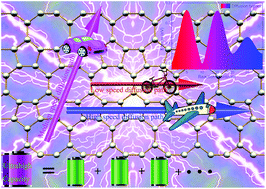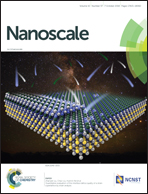OPGs: promising anode materials with high specific capacity and rate capability for Li/Na ion batteries†
Abstract
Two-dimensional (2D) nanostructures with high specific capacity and high rate capability have attracted extensive attention due to their promising applications as anode materials for rechargeable ion batteries. In this study, we have employed density functional theory calculations to explore the electrochemical properties of Li and Na atoms, adsorption and diffusion on 2D carbon nanosheets named Octagon–Pentagon-Graphenes (OPGs). Two types of OPGs are considered, i.e. OPG_L and OPG_Z, and were found to be stable with much lower binding energies than that of graphdiyne. Both the nanosheets can combine Li/Na atoms strongly and easily. In the OPG_L, low energy barriers of 0.292 and 0.265 eV are obtained for the diffusion of Li and Na atoms, while in the OPG_Z, these barriers are much smaller. At room temperature, the diffusion rate of a Li atom on the OPGs is estimated to be at least 10 times faster than that on graphene. An ultrahigh Li/Na storage capacity of 2230 mA h g−1 can be achieved in both the OPG_L and OPG_Z, which is about 6 times larger than the 372 mAh g−1 of graphene. During the whole processes of Li/Na ion insertion, the OPGs exhibit a low average operating voltage and good metallic properties. Our results suggest that high specific capacity and rate capability could be expected in OPG-based Li/Na ion batteries.



 Please wait while we load your content...
Please wait while we load your content...